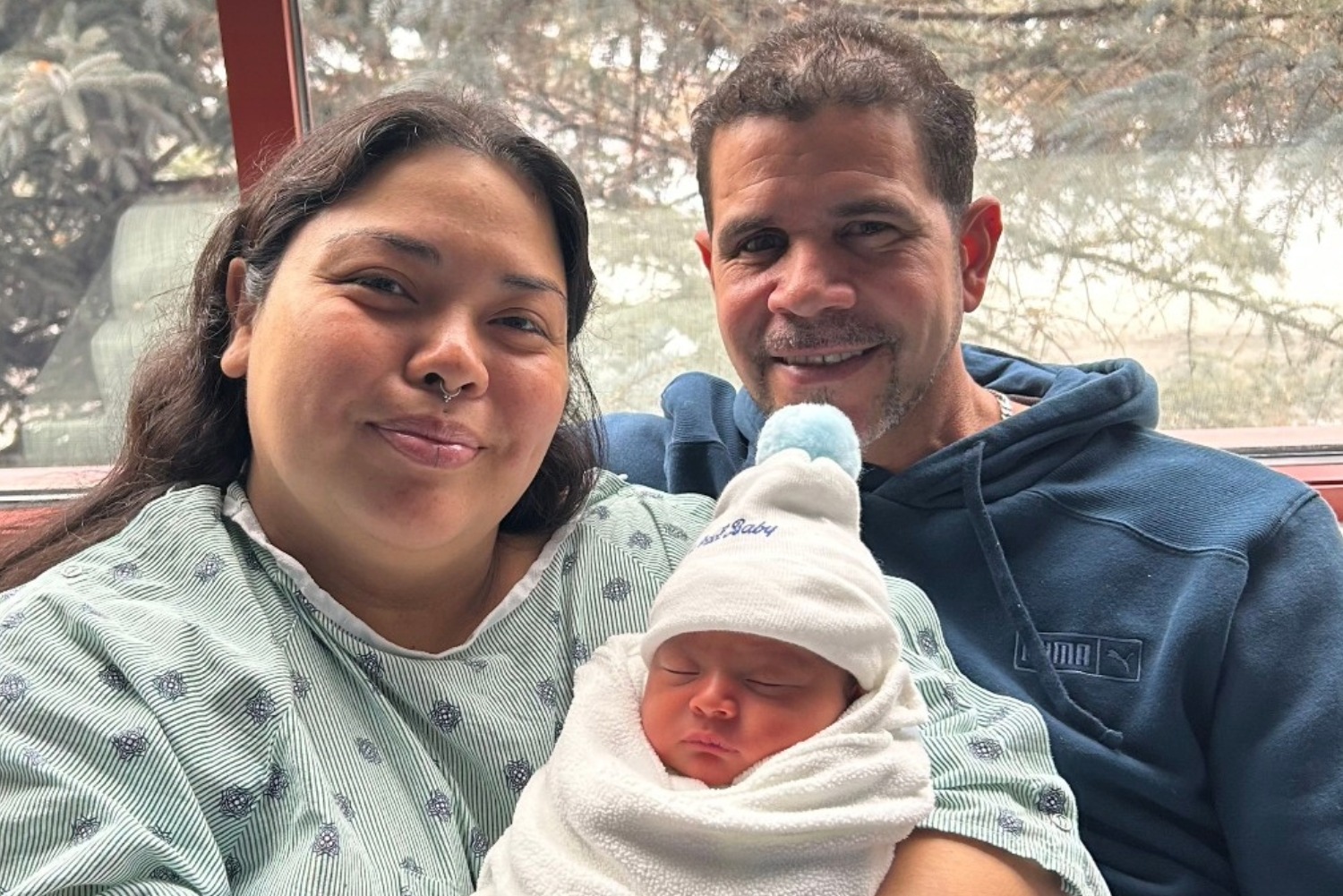News
5 Facts to Help You Take Control of Your Cholesterol
Controlling your cholesterol can change your life.
1. Why is Cholesterol the silent killer?
Cholesterol is often termed the silent killer because it doesn't manifest itself through symptoms or a person's physical appearance. A 110-pound 5-foot-4 woman could have a cholesterol count of 250 while an overweight woman's cholesterol could fall well within the normal range.
Simply knowing your numbers isn't enough. The American Heart Association and American College of Cardiology have cholesterol guidelines that factor in race age gender and more. The equation calculates the risk of heart attack or stroke within the next 10 years. Knowing your risks could make the difference in how you approach your health and lifestyle.
2. What does cholesterol have to do with a heart attack?
Cholesterol is a waxy substance which originates from two sources: the body's natural process and foods.
Cholesterol isn't bad in and of itself. In fact it's essential for survival it is used to make up every cell membrane in order to protect the inside of the cell.
The liver produces as much cholesterol as the body needs. Cholesterol doesn't dissolve in blood so the problem begins to develop when diets high in cholesterol-containing meat and full-fat dairy products start to build up. Diets high in saturated and trans fat also cause the liver to produce more cholesterol than normal.
This extra cholesterol can form plaque in the arteries. Arteries help supply oxygenated blood from the heart to every part of the body. If the plaque breaks open causing a clot that blocks the artery blood can't reach the heart or brain resulting in a heart attack or stroke respectively.
3. What is good and bad cholesterol?
Total cholesterol count doesn't tell the entire story of risk because there are two types of cholesterol: bad (LDL) cholesterol increases the risk of coronary disease because it contributes to plaque while good cholesterol (HDL) provides a protective effect against coronary disease by removing LDL. Higher HDL levels reduce the risk for heart disease.
You can think of LDL as toxic waste in your blood vessels which builds up and causes blockages says Dr. Dennis Lipton an internist at Vail Valley Medical Center. The HDL is the garbage collector. It gets rid of the LDL and prevents it from doing damage helping to keep your vessels clean. For people whose diet is laden with excess fat cholesterol and sugar the scale is badly tipped in favor of LDL. The damage goes on virtually unchecked.
If HDL numbers are high a total cholesterol count over 200 may not be as significant a warning sign as previously believed. However if LDL is over 190 that's cause for treatment says Dr. Jerry Greenberg a cardiologist at Vail Valley Medical Center adding that a more ideal LDL level is 130.
According to the American Heart Association about one-third of adults in the United States have elevated levels of LDL. People who have a total cholesterol of 150 or below and/or an LDL cholesterol of 70 or below almost never have heart attacks Lipton says.
4. How to lower your risk
Simple changes in diet taken slowly or all at once can drastically change people's risk factors for coronary artery disease partially by reducing cholesterol.
Physicians like Dr. Dean Ornish proved almost 25 years ago that coronary heart disease can be stopped and even reversed with diet and lifestyle change Lipton says. What is that change? It's eating more of a whole-foods plant-based diet more vegetables fruits whole grains and legumes (and) less processed grains sugar oils meat dairy and eggs. If you go all the way with this you will see the biggest change. I've seen cholesterol levels drop almost 100 points without medications. (And on the other hand medication needs especially for blood pressure or blood sugar can change drastically when people change their diets he says so it's important to consult a doctor when making major dietary changes.)
People can train their bodies as well as their minds to eat better. Sometimes it's just a matter of learning to eat to nurture your body as opposed to filling it up. Lipton suggests eating half a pound of raw vegetables and half a pound raw fruit before dinner and then gradually increasing it to 1 pound each.
This may sound like a lot but it is really about the size of one medium to large apple and a handful of baby carrots ... the idea is that your stomach will get full of healthy food and you will eat less unhealthy food lose weight and become healthier.
In the process people's taste buds which crave sugar fat and salt adjust Lipton says. It can take up to six weeks or even more for your taste buds to adjust then you will start to enjoy the taste of vegetables much more than you even imagined he says. The feeling of deprivations passes and you will feel better than ever. It's getting through that six weeks that's the hard part.
So how do people do it? Some people radically change their diets cutting sugar fats and salts and loading up on whole foods even though they might not enjoy it Lipton says. For those who want to take it a little more slowly I would say to start with making one meal a day a whole-foods plant-based meal. I recommend eating this meal in a state of true hunger in other words make sure you are really hungry and I can assure you that the food will taste better.
He also suggests gradually changing diet by alternating days of eating whole-foods plant-based meals with eating more normally and gradually phase in more of the healthy days and meals.
Lifestyle changes like increased exercise and nonsmoking also reduce risk of heart attack and strokes. Smoking can cause tighter smaller arteries making it more difficult for blood to flow through the effect of high blood pressure on arteries is like blowing into a balloon which will eventually pop because it's only so elastic.
Consuming simple sugars increases triglycerides which are a form of fat that store excess sugar. When the body doesn't use the energy or calories it consumes it stores it as fat it's like overfilling a bucket. Eating less sugar and exercising can help keep triglyceride levels in check Lipton says.
The best route for prevention includes dietary changes as well as increasing exercise reducing stress and treating risk factors like hypertension and diabetes.
However when risk factors increase statins are often the way to go. Greenberg says they are enormously safe with the most common side effect being muscle aches. Seven statin drugs are available to lower the amount of cholesterol circulating in the bloodstream.
Overall heart disease is the No. 1 killer in the United States and stroke the fourth. So the question becomes: What are you willing to do to make changes?
While cholesterol may be known as the silent killer it's certainly not an uncontrollable killer. Each decision regarding lifestyle and diet either decreases or increases the dangerous effect of excess cholesterol.
5. When to get screened
Men who have a family history of coronary or cardiac disease should be screened beginning at age 25 while women with such genetic predisposition should see their doctors at age 35. For people at a low risk men should be screened at 35 and women at age 45.
Coronary disease starts at an earlier age in men than women by about 10 years says Dr. Jerry Greenberg adding that people at low risk for cardiac disease should continue to get screened every three to five years while those at high risk should see their doctors more frequently.
About Dr. Dennis Lipton - Internal Medicine | (970) 926-6340
Dennis Lipton MD is a board-certified internist trained in the essentials of primary care and disease prevention and can help ensure patients receive the proper medical screening tests and immunizations.
About Dr. Jerry Greenberg Cardiology vvmc.com/cardiology
Jerry Greenberg MD is a board-certified cardiologist specializing in interventional cardiology. Dr. Greenberg has extensive experience in the use of intravascular ultrasound and other imaging equipment to identify heart conditions and ensure proper treatment.
More News
-
New!
More

Sarah Drew Honored as Recipient of Vail Health Elevate Award
Sarah Drew, MSN, FNP-C, ENP-C, Senior Director of Emergency and Trauma Services at Vail Health, has been named the recipient of the Vail Health Elevate Award.
-
New!
More

First Baby of 2026
It's a boy! Vail Health Hospital welcomed the first baby born in 2026 on January 5 at 7:48 p.m.
-
More

Screening Secrets: What Every Man Should Know About Prostate Cancer Screening
Prostate cancer is the most common type of non-skin related cancer in men, and it is the second leading cause of cancer-related deaths in men within the United States, behind lung cancer. Fortunately, if caught early, prostate cancer remains highly treatable and curable with minimally invasive procedures.





